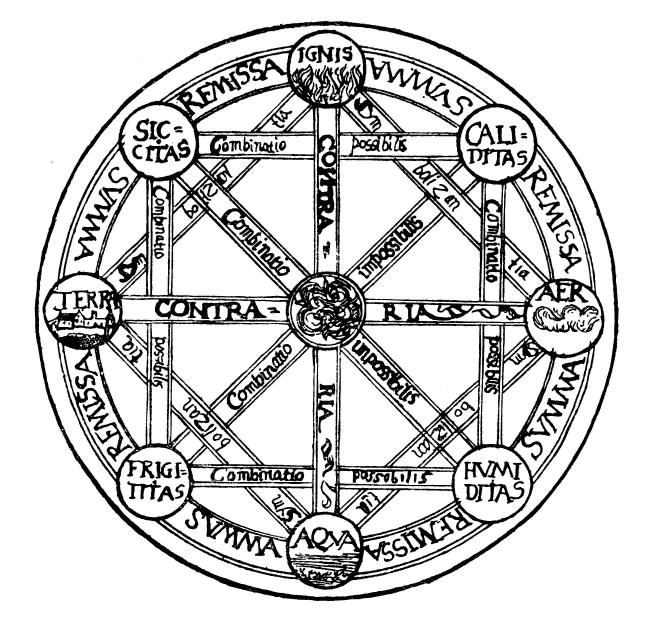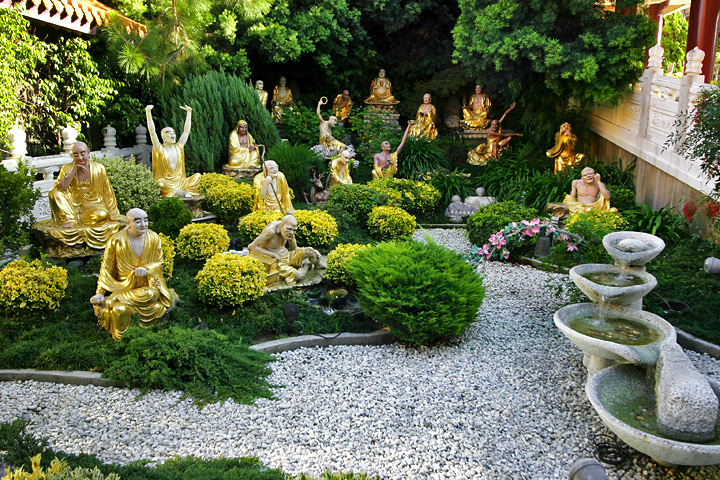|
Ratnasaṃbhava
Ratnasambhava (, lit. "Jewel-Born") is one of the Five Dhyani Buddhas (or "Five Meditation Buddhas") of Mahayana and Vajrayana or Tantric Buddhism. Ratnasambhava's mandalas and mantras focus on developing equanimity and equality and, in Vajrayana Buddhist thought is associated with the attempt to destroy greed and pride. His consort is Mamaki and his mount is a horse or a pair of lions. Textual History The first documented mention of Ratnasambhava is found in the '' Suvarṇaprabhāsa Sūtra'' and in the Guhyasamāja Tantra (4th Century CE), and he subsequently appears in a number of Vajrayana texts. The most elaborate account of him is to be found in the ''Pañcakara'' section of the ''Advayavajrasaṃgraha.'' In the Śūraṅgama mantra ( Chinese: 楞嚴咒; pinyin: ''Léngyán Zhòu'') taught in the Śūraṅgama sutra ( Chinese: 楞嚴經; pinyin: ''Léngyán Jīng''), an especially influential dharani in the Chinese Chan tradition, Ratnasambhava is mentioned to be the ho ... [...More Info...] [...Related Items...] OR: [Wikipedia] [Google] [Baidu] |
Shurangama Mantra
The Shurangama or Śūraṅgama mantra is a dhāraṇī or long mantra of Buddhist practice in East Asia. Although relatively unknown in modern Tibet, there are several Śūraṅgama Mantra texts in the Tibetan Buddhist canon. It has strong associations with the Chinese Chan Buddhist tradition. The mantra was, according to the opening chapter of the '' Śūraṅgama Sūtra'', historically transmitted by Gautama Buddha to Manjushri to protect Ananda before he had become an arhat. It was again spoken by the Buddha before an assembly of monastic and lay adherents. Like the popular six-syllable mantra "om mani padme hum" and the Nīlakaṇṭha Dhāraṇī, the Śūraṅgama mantra is synonymous with practices of Avalokiteśvara, an important bodhisattva in both East Asian Buddhism and Tibetan Buddhism. The Śūraṅgama Mantra also extensively references Buddhist deities such as the bodhisattvas Manjushri, Mahākāla, Sitatapatra, Vajrapani and the Five Tathagatas, especia ... [...More Info...] [...Related Items...] OR: [Wikipedia] [Google] [Baidu] |
Five Tathāgatas
In Mahayana and Vajrayana, Vajrayana Buddhism, the Five Tathāgatas (Skt: पञ्चतथागत, ''pañcatathāgata''; (Ch: 五方佛, ''Wǔfāngfó'') or Five Wisdom Tathāgatas (Ch: 五智如来, ''Wǔzhì Rúlái''), are the five cardinal male and female Buddhahood, Buddhas that are inseparable co-equals,Buddha Weekly, ''Five Female Buddhas or Mothers: Their Roles as Prajnas or Enlightened Wisdom — Inseparable Co-Equals Rather Than Consorts'', https://buddhaweekly.com/five-female-buddhas-or-mothers-their-roles-as-prajnas-or-enlightened-wisdom-inseparable-co-equals-rather-than-consorts/, ''"What is often misunderstood is the concept that even if you practice a single Buddha, for example, Amitabha, he is never separate from his Female Co-Equal Buddha Pandara. Or, if you practice Green Tara as a sole practice, she is never separate from her co-Equal Male Budddha Amoghasiddhi."'' although the male cardinal Buddhas are more often represented. Collectively, the male and female ... [...More Info...] [...Related Items...] OR: [Wikipedia] [Google] [Baidu] |
Chinese Language
Chinese ( or ) is a group of languages spoken natively by the ethnic Han Chinese majority and List of ethnic groups in China, many minority ethnic groups in China, as well as by various communities of the Chinese diaspora. Approximately 1.39 billion people, or 17% of the global population, speak a variety of Chinese as their first language. Chinese languages form the Sinitic languages, Sinitic branch of the Sino-Tibetan language family. The spoken varieties of Chinese are usually considered by native speakers to be dialects of a single language. However, their lack of mutual intelligibility means they are sometimes considered to be separate languages in a Language family, family. Investigation of the historical relationships among the varieties of Chinese is ongoing. Currently, most classifications posit 7 to 13 main regional groups based on phonetic developments from Middle Chinese, of which the most spoken by far is Mandarin Chinese, Mandarin with 66%, or around 800&nb ... [...More Info...] [...Related Items...] OR: [Wikipedia] [Google] [Baidu] |
Classical Element
The classical elements typically refer to Earth (classical element), earth, Water (classical element), water, Air (classical element), air, Fire (classical element), fire, and (later) Aether (classical element), aether which were proposed to explain the nature and complexity of all matter in terms of simpler Substance theory, substances. Ancient cultures in Ancient Greece, Greece, Angola, Ancient Tibet, Tibet, Ancient India, India, and Mali had similar lists which sometimes referred, in local languages, to "air" as "wind", and to "aether" as "space". These different cultures and even individual philosophers had widely varying explanations concerning their attributes and how they related to observable phenomena as well as cosmology. Sometimes these theories overlapped with mythology and were personification, personified in deities. Some of these interpretations included atomism (the idea of very small, indivisible portions of matter), but other interpretations considered the ... [...More Info...] [...Related Items...] OR: [Wikipedia] [Google] [Baidu] |
Mudra
A mudra (; , , "seal", "mark", or "gesture"; ) is a symbolic or ritual gesture or pose in Hinduism, Jainism and Buddhism. While some mudras involve the entire body, most are performed with the hands and fingers. As well as being spiritual gestures employed in the iconography and spiritual practice of Indian religions, mudras have meaning in many forms of Indian dance, and yoga. The range of mudras used in each field (and religion) differs, but with some overlap. In addition, many of the Buddhist mudras are used outside South Asia, and have developed different local forms elsewhere. In hatha yoga, mudras are used in conjunction with pranayama (yogic breathing exercises), generally while in a seated posture, to stimulate different parts of the body involved with breathing and to affect the flow of prana. It is also associated with bindu, bodhicitta, amrita, or consciousness in the body. Unlike older tantric mudras, hatha yogic mudras are generally internal actions, involvin ... [...More Info...] [...Related Items...] OR: [Wikipedia] [Google] [Baidu] |
Dharma
Dharma (; , ) is a key concept in various Indian religions. The term ''dharma'' does not have a single, clear Untranslatability, translation and conveys a multifaceted idea. Etymologically, it comes from the Sanskrit ''dhr-'', meaning ''to hold'' or ''to support'', thus referring to law that sustains things—from one's life to society, and to the Universe at large. In its most commonly used sense, dharma refers to an individual's moral responsibilities or duties; the dharma of a farmer differs from the dharma of a soldier, thus making the concept of dharma a varying dynamic. As with the other components of the Puruṣārtha, the concept of ''dharma'' is pan-Indian. The antonym of dharma is ''adharma''. In Hinduism, ''dharma'' denotes behaviour that is considered to be in accord with ''Ṛta''—the "order and custom" that makes life and universe possible. This includes duties, rights, laws, conduct, virtues and "right way of living" according to the stage of life or social posi ... [...More Info...] [...Related Items...] OR: [Wikipedia] [Google] [Baidu] |
Buddhism
Buddhism, also known as Buddhadharma and Dharmavinaya, is an Indian religion and List of philosophies, philosophical tradition based on Pre-sectarian Buddhism, teachings attributed to the Buddha, a wandering teacher who lived in the 6th or 5th century Before the Common Era, BCE. It is the Major religious groups, world's fourth-largest religion, with about 500 million followers, known as Buddhists, who comprise four percent of the global population. It arose in the eastern Gangetic plain as a movement in the 5th century BCE, and gradually spread throughout much of Asia. Buddhism has subsequently played a major role in Asian culture and spirituality, eventually spreading to Western world, the West in the 20th century. According to tradition, the Buddha instructed his followers in a path of bhavana, development which leads to Enlightenment in Buddhism, awakening and moksha, full liberation from ''Duḥkha, dukkha'' (). He regarded this path as a Middle Way between extremes su ... [...More Info...] [...Related Items...] OR: [Wikipedia] [Google] [Baidu] |
Skandha
' (Sanskrit) or (Pāḷi) means "heaps, aggregates, collections, groupings, clusters". In Buddhism, it refers to the five aggregates of clinging (), the five material and mental factors that take part in the perpetual process of craving, clinging and aversion due to Avijja. They are also explained as the five factors that constitute and explain a sentient being's person and personality, but this is a later interpretation in response to ''Sarvastivada, Sarvāstivādin'' essentialism. The 14th Dalai Lama subscribes to this interpretation. The five aggregates or heaps of clinging are: # form, sense objects (or material image, impression) () # sensations (or feelings of pleasure, pain, or indifference (both bodily and mental), created from the coming together of the senses, sense objects, and the consciousness) () # perceptions (or the nature of recognizing ''marks'' — making distinctions) () # mental activity, formations, or perpetuations () # consciousness (or the nature o ... [...More Info...] [...Related Items...] OR: [Wikipedia] [Google] [Baidu] |
Arhat
In Buddhism, an ''Arhat'' () or ''Arahant'' (, 𑀅𑀭𑀳𑀦𑁆𑀢𑁆) is one who has gained insight into the true nature of existence and has achieved ''Nirvana (Buddhism), Nirvana'' and has been liberated from the Rebirth (Buddhism), endless cycle of rebirth. The understanding of the concept has changed over the centuries, and varies between different schools of Buddhism and different regions. A range of views on the attainment of arhats existed in the early Buddhist schools. The Sarvastivada, Sarvāstivāda, Kāśyapīya, Mahāsāṃghika, Ekavyāvahārika, Lokottaravāda, Bahuśrutīya, Prajñaptivāda, and Caitika schools all regarded arhats as imperfect in their attainments compared to buddhahood, buddhas.Sree Padma. Barber, Anthony W. ''Buddhism in the Krishna River Valley of Andhra''. 2008. p. 44Warder, A.K. ''Indian Buddhism''. 2000. p. 277 Mahayana Buddhist teachings urge followers to take up the path of a bodhisattva, and to not fall back to the level of ... [...More Info...] [...Related Items...] OR: [Wikipedia] [Google] [Baidu] |
Ganges River
The Ganges ( ; in India: Ganga, ; in Bangladesh: Padma, ). "The Ganges Basin, known in India as the Ganga and in Bangladesh as the Padma, is an international which goes through India, Bangladesh, Nepal and China." is a trans-boundary river of Asia which flows through India and Bangladesh. The river rises in the western Himalayas in the States and union territories of India, Indian state of Uttarakhand. It flows south and east through the Gangetic Plain, Gangetic plain of North India, receiving the right-bank tributary, the Yamuna, which also rises in the western Indian Himalayas, and several left-bank tributaries from Nepal that account for the bulk of its flow. In West Bengal state, India, a feeder canal taking off from its right bank diverts 50% of its flow southwards, artificially connecting it to the Hooghly River. The Ganges continues into Bangladesh, its name changing to the Padma River, Padma. It is then joined by the Jamuna River (Bangladesh), Jamuna, the lower str ... [...More Info...] [...Related Items...] OR: [Wikipedia] [Google] [Baidu] |
Kṣitigarbha Bodhisattva Pūrvapraṇidhāna Sūtra
The ''Kṣitigarbha Bodhisattva Pūrvapraṇidhāna Sūtra'' (Sanskrit, ''Sutra of the Fundamental Vows of the Bodhisattva Kṣitigarbha;'' ) or ''Kṣitigarbhasūtra'' is a Mahāyāna sūtra teaching about the bodhisattva Kṣitigarbha and is one of the more popular sūtras in Chinese Buddhism. The sutra tells of how Kṣitigarbha became a bodhisattva by making great vows to rescue other sentient beings and a description of how he displayed filial piety in his past lifetimes. The sutra also expounds at length the retributions of unwholesome karma, descriptions of Buddhist hells and the benefits of good merit both great and small. History The ''Kṣitigarbhasūtra'' was first translated from Sanskrit into Chinese in the 7th century during the Tang dynasty by the Tripiṭaka master Śikṣānanda, a monk from Khotan who also provided a new translation of the '' Avataṃsaka Sūtra'' and the ''Laṅkāvatāra Sūtra''. Some scholars suspected that instead of being translated, t ... [...More Info...] [...Related Items...] OR: [Wikipedia] [Google] [Baidu] |






